Potassium tetrafluoroborate
Modify Date: 2025-08-21 10:17:35
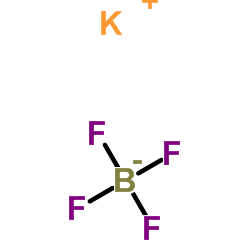
Potassium tetrafluoroborate structure
|
Common Name | Potassium tetrafluoroborate | ||
|---|---|---|---|---|
| CAS Number | 14075-53-7 | Molecular Weight | 125.903 | |
| Density | 2.505 g/mL at 25 °C(lit.) | Boiling Point | 960.85 (310 torr) | |
| Molecular Formula | BF4K | Melting Point | 530 °C(lit.) | |
| MSDS | Chinese USA | Flash Point | N/A | |
| Name | Potassium tetrafluoroborate |
|---|---|
| Synonym | More Synonyms |
| Density | 2.505 g/mL at 25 °C(lit.) |
|---|---|
| Boiling Point | 960.85 (310 torr) |
| Melting Point | 530 °C(lit.) |
| Molecular Formula | BF4K |
| Molecular Weight | 125.903 |
| Exact Mass | 125.966629 |
| LogP | 1.30000 |
| Index of Refraction | 1.3245 |
| Stability | Stable. May decompose on exposure to water or moisture. Incompatible with metals. |
| Water Solubility | 4.4 g/L (20 ºC) |
Synonym:Potassium borofluoride Section 2 - COMPOSITION, INFORMATION ON INGREDIENTS
Risk Phrases: 34 Section 3 - HAZARDS IDENTIFICATION EMERGENCY OVERVIEW
Causes burns.Corrosive.Moisture sensitive. Potential Health Effects Eye: Contact with eyes may cause severe irritation, and possible eye burns. Skin: May cause severe irritation and possible burns. Ingestion: May cause severe and permanent damage to the digestive tract. Causes gastrointestinal tract burns. Inhalation: Irritation may lead to chemical pneumonitis and pulmonary edema. Causes chemical burns to the respiratory tract. May cause abdominal pain, nausea, vomiting, and inflammation of the gums and mouth. Chronic: No information found. Section 4 - FIRST AID MEASURES Eyes: Get medical aid immediately. Do NOT allow victim to rub eyes or keep eyes closed. Extensive irrigation with water is required (at least 30 minutes). Skin: Get medical aid immediately. Immediately flush skin with plenty of water for at least 15 minutes while removing contaminated clothing and shoes. Wash clothing before reuse. Destroy contaminated shoes. Ingestion: Do not induce vomiting. If victim is conscious and alert, give 2-4 cupfuls of milk or water. Never give anything by mouth to an unconscious person. Get medical aid immediately. Inhalation: Get medical aid immediately. Remove from exposure and move to fresh air immediately. If breathing is difficult, give oxygen. Do NOT use mouth-to-mouth resuscitation. If breathing has ceased apply artificial respiration using oxygen and a suitable mechanical device such as a bag and a mask. Notes to Physician: Section 5 - FIRE FIGHTING MEASURES General Information: As in any fire, wear a self-contained breathing apparatus in pressure-demand, MSHA/NIOSH (approved or equivalent), and full protective gear. During a fire, irritating and highly toxic gases may be generated by thermal decomposition or combustion. Extinguishing Media: Use water spray, dry chemical, carbon dioxide, or chemical foam. Use agent most appropriate to extinguish fire. Do NOT get water inside containers. Section 6 - ACCIDENTAL RELEASE MEASURES General Information: Use proper personal protective equipment as indicated in Section 8. Spills/Leaks: Vacuum or sweep up material and place into a suitable disposal container. Clean up spills immediately, observing precautions in the Protective Equipment section. Avoid generating dusty conditions. Provide ventilation. Do not get water inside containers. Section 7 - HANDLING and STORAGE Handling: Minimize dust generation and accumulation. Do not breathe dust, vapor, mist, or gas. Keep container tightly closed. Do not get on skin or in eyes. Do not ingest or inhale. Use with adequate ventilation. Do not allow contact with water. Use only in a chemical fume hood. Discard contaminated shoes. Keep from contact with moist air and steam. Storage: Store in a cool, dry place. Keep container closed when not in use. Keep under a nitrogen blanket. Corrosives area. Store protected from moisture. Section 8 - EXPOSURE CONTROLS, PERSONAL PROTECTION Engineering Controls: Facilities storing or utilizing this material should be equipped with an eyewash facility and a safety shower. Use adequate ventilation to keep airborne concentrations low. Exposure Limits CAS# 14075-53-7: Personal Protective Equipment Eyes: Wear appropriate protective eyeglasses or chemical safety goggles as described by OSHA's eye and face protection regulations in 29 CFR 1910.133 or European Standard EN166. Skin: Wear appropriate protective gloves to prevent skin exposure. Clothing: Wear appropriate protective clothing to minimize contact with skin. Respirators: A respiratory protection program that meets OSHA's 29 CFR 1910.134 and ANSI Z88.2 requirements or European Standard EN 149 must be followed whenever workplace conditions warrant respirator use. Section 9 - PHYSICAL AND CHEMICAL PROPERTIES Physical State: Crystalline powder Color: white Odor: Not available. pH: Not available. Vapor Pressure: Not available. Viscosity: Not available. Boiling Point: Not available. Freezing/Melting Point: 530 deg C Autoignition Temperature: Not applicable. Flash Point: Not applicable. Explosion Limits, lower: Not available. Explosion Limits, upper: Not available. Decomposition Temperature: Solubility in water: slightly soluble in boiling alcohol Specific Gravity/Density: 2.5050g/cm3 Molecular Formula: BF4K Molecular Weight: 125.91 Section 10 - STABILITY AND REACTIVITY Chemical Stability: Stable at room temperature in closed containers under normal storage and handling conditions. Conditions to Avoid: Dust generation, moisture, excess heat, exposure to moist air or water. Incompatibilities with Other Materials: Strong acids, strong bases, strong oxidizing agents, strong reducing agents. Hazardous Decomposition Products: Irritating and toxic fumes and gases, hydrogen fluoride gas. Hazardous Polymerization: Has not been reported. Section 11 - TOXICOLOGICAL INFORMATION RTECS#: CAS# 14075-53-7: ED2800000 LD50/LC50: Not available. Carcinogenicity: Potassium Tetrafluoroborate, C.P. - Not listed by ACGIH, IARC, or NTP. Other: See actual entry in RTECS for complete information. Section 12 - ECOLOGICAL INFORMATION Section 13 - DISPOSAL CONSIDERATIONS Dispose of in a manner consistent with federal, state, and local regulations. Section 14 - TRANSPORT INFORMATION IATA Shipping Name: CORROSIVE SOLID, N.O.S.* Hazard Class: 8 UN Number: 1759 Packing Group: II IMO Shipping Name: CORROSIVE SOLID, N.O.S. Hazard Class: 8 UN Number: 1759 Packing Group: II RID/ADR Shipping Name: CORROSIVE SOLID, N.O.S. Hazard Class: 8 UN Number: 1759 Packing group: II Section 15 - REGULATORY INFORMATION European/International Regulations European Labeling in Accordance with EC Directives Hazard Symbols: C Risk Phrases: R 34 Causes burns. Safety Phrases: S 25 Avoid contact with eyes. S 36/37/39 Wear suitable protective clothing, gloves and eye/face protection. S 45 In case of accident or if you feel unwell, seek medical advice immediately (show the label where possible). WGK (Water Danger/Protection) CAS# 14075-53-7: 1 Canada CAS# 14075-53-7 is listed on Canada's DSL List. CAS# 14075-53-7 is not listed on Canada's Ingredient Disclosure List. US FEDERAL TSCA CAS# 14075-53-7 is listed on the TSCA inventory. SECTION 16 - ADDITIONAL INFORMATION N/A |
CHEMICAL IDENTIFICATION
HEALTH HAZARD DATAACUTE TOXICITY DATA
|
| Personal Protective Equipment | Eyeshields;Gloves;type N95 (US);type P1 (EN143) respirator filter |
|---|---|
| Hazard Codes | C:Corrosive |
| Risk Phrases | R34 |
| Safety Phrases | S37/39-S26-S45-S36/37/39 |
| RIDADR | 3260 |
| WGK Germany | 1 |
| RTECS | ED2800000 |
| Packaging Group | I; II; III |
| HS Code | 2826909090 |
| Precursor 10 | |
|---|---|
| DownStream 7 | |
| HS Code | 2826909090 |
|---|
|
The EpiOcular Eye Irritation Test (EIT) for hazard identification and labelling of eye irritating chemicals: protocol optimisation for solid materials and the results after extended shipment.
Altern. Lab. Anim. 43 , 101-27, (2015) The 7th Amendment to the EU Cosmetics Directive and the EU REACH Regulation have reinforced the need for in vitro ocular test methods. Validated in vitro ocular toxicity tests that can predict the hum... |
| Borate(1-), tetrafluoro-, potassium (1:1) |
| potassium fluoborate |
| benzyl alcohol xanthate potassium salt |
| MFCD00011395 |
| potassium benzylxanthate |
| CARBONIC ACID,DITHIO-,O-BENZYL ESTER,POTASSIUM SALT |
| Potassium borofluoride |
| Potassium tetrafluoroborate |
| Potassium O-benzyl dithiocarbonate |
| potassium fluoroborate |
| dithiocarbonic acid O-benzyl ester,potassium-salt |
| EINECS 237-928-2 |
| Potassium O-benzyl xanthate |
| Dithiokohlensaeure-O-benzylester,Kalium-Salz |
| potassium benzyl dithiocarbonate |
| Xanthic acid,benzyl-,potassium salt |
| potassiumm benzyldithiocarbonate |
| Potassium Fluorborate (KBF4) |
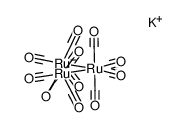 CAS#:80662-65-3
CAS#:80662-65-3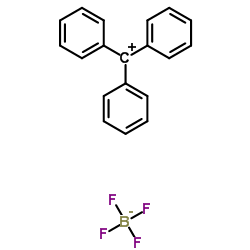 CAS#:341-02-6
CAS#:341-02-6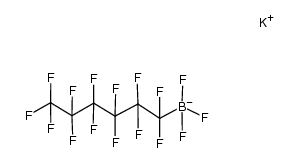 CAS#:329065-91-0
CAS#:329065-91-0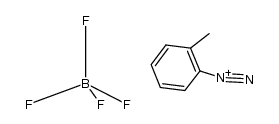 CAS#:2093-46-1
CAS#:2093-46-1 CAS#:333-20-0
CAS#:333-20-0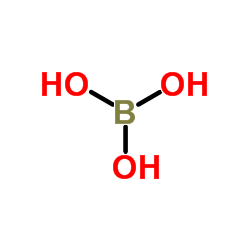 CAS#:11113-50-1
CAS#:11113-50-1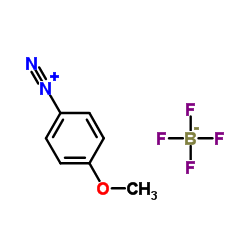 CAS#:459-64-3
CAS#:459-64-3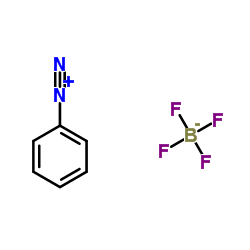 CAS#:369-57-3
CAS#:369-57-3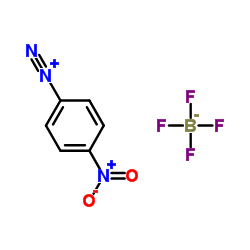 CAS#:456-27-9
CAS#:456-27-9 CAS#:459-44-9
CAS#:459-44-9 CAS#:3244-41-5
CAS#:3244-41-5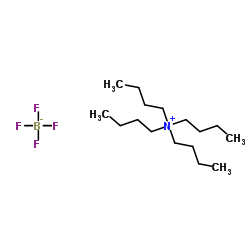 CAS#:429-42-5
CAS#:429-42-5 CAS#:7637-07-2
CAS#:7637-07-2 CAS#:10294-34-5
CAS#:10294-34-5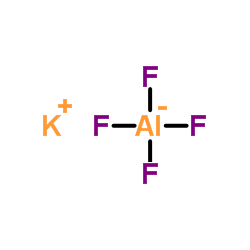 CAS#:14484-69-6
CAS#:14484-69-6 CAS#:13455-22-6
CAS#:13455-22-6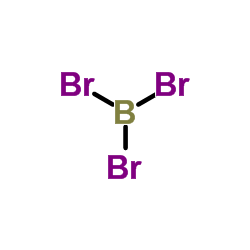 CAS#:10294-33-4
CAS#:10294-33-4
